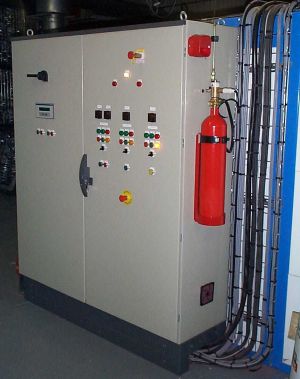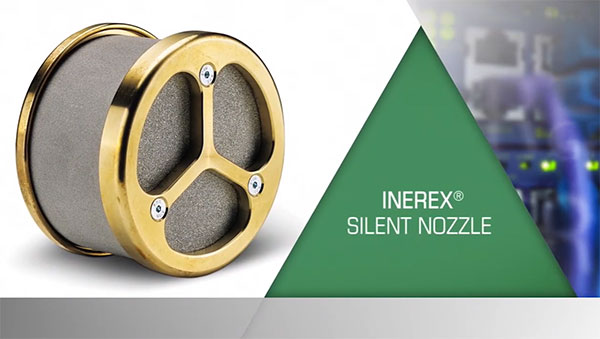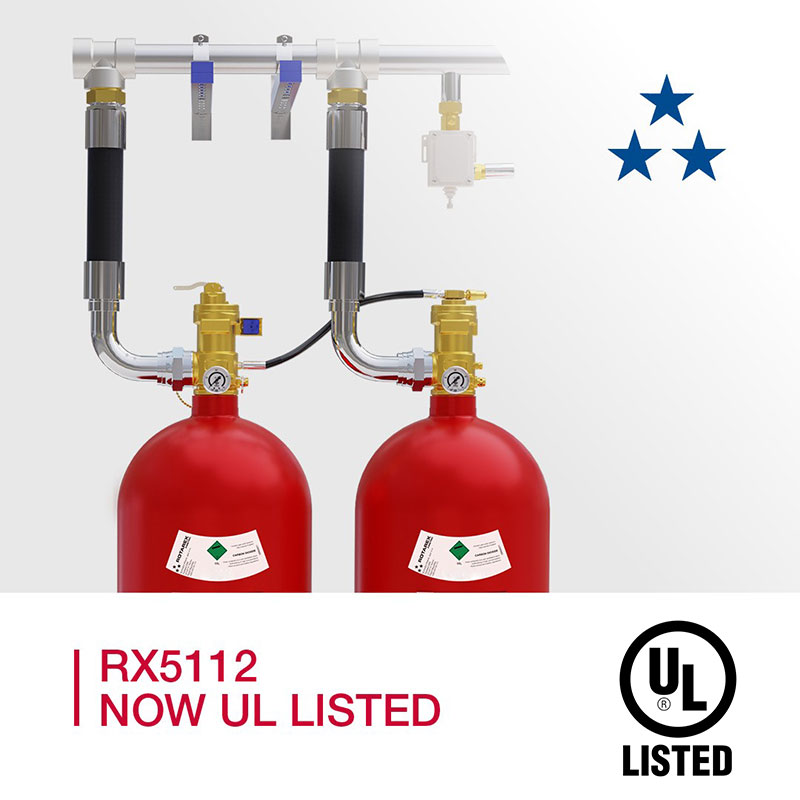Which to Choose:
Full Room or Electrical Cabinet Fire Protection?

Unlikely, but details are sparse. Judging solely on early reports, a recent electrical cabinet fire at the Met Office's £97m supercomputer facility in Devon may have left the weather service unable to give up-to-date forecasts for a number of hours.
Fortunately, nobody was hurt, and the Met Office's supercomputer—one of the most powerful in the world—was unaffected. But according to the Plymouth Herald, the fire was indeed in the same building, and seems to have shut down the center's weather updating systems. When fire crews entered the building, it was "smoke logged, and the crew found overheating power cables in an electrical cabinet."
The Met Office's fire detection and extinguishing systems seem to have worked properly. What's less clear is whether they included electrical cabinet-based object fire protection.
Why does it matter? Because in a mission-critical situation like this, automatic fire suppression within an electrical cabinet can make the difference between a single piece of equipment being knocked out—or an entire roomful.
Fire Protection…Inside the Cabinet?
It's not as crazy as it may sound. The fact is, from 2010 through 2014, an estimated 32,960 non-home fires were attributed to electrical distribution and components, causing $1.2 billion in direct property damage, according to a March, 2017 study from NFPA.
With an estimated 13 percent of all non-home fires starting this way, a growing number of businesses and government agencies are looking at adding electrical cabinet-based automated fire suppression systems to their defenses.
Think about it. Fixed installation systems for building and room fire protection play a critically important role in protecting facilities of all kinds, from data centers to factory floors and beyond. But when a fire breaks out in a single electrical cabinet, why not stop it at the source—before the fire can damage surrounding equipment, and before the situation escalates enough to require your total flooding systems to also be actuated?
That's the idea behind a new generation of automatic fire suppression systems that fit directly into electrical cabinets, directly above wires and circuitry where a fire is likely to start.
Some of the most advanced systems use pressurized, linear pneumatic tubing technology that bursts the moment it detects fires within an electrical cabinet. The sudden tube depressurization actuates the system and instantly floods the entire cabinet area with extinguishing agent, reaching where room protection systems cannot.
As a result, the fire is quickly snuffed out just moments after it begins, minimizing damage. And room-based systems don't have to be actuated more than is absolutely necessary, helping to accelerate incident recovery times and ensure business continuity.
Forecast: Fire Danger
Whatever the situation may be, the incident at the Met Office is consistent with the quintessential electrical cabinet fire. According to NFPA statistics, electrical cabinets are most likely to occur between midnight and 8 AM and, oddly enough, on a Tuesday. As it happens, the Met Office fire occurred at roughly 2 AM, Tuesday, 23 January.
It should also be noted that the Met Office's fire protection defenses may in fact include electric cabinet-based fire suppression, which could help explain why more systems weren't damaged. Subsequent news reports indicate electrical systems had to be cut to tackle overheating cables (the ignition source of up to 29% of electrical fire property damage), but the supercomputer, apparently within the same room, was untouched.
Either way, the incident only further illustrates the importance of such systems to an organization's mission. According to the London Telegraph, the Met Office outage occurred just as Britain prepared for torrential rain and gale force winds from Storm Georgiana, a critical time for meteorological forecasts, for instance. Thankfully, systems seem to have been back online quickly.
So, what's right for your organization's critical systems: Room-level fire protection alone, or with the addition of electrical cabinet-based automatic fire detection and suppression?
My advice: Don't wait until after midnight next Tuesday to find out.
To learn more about electrical cabinet-based fire suppression systems, including the FireDETEC line of automatic fire suppression systems from Rotarex, download a FREE catalog, here.








